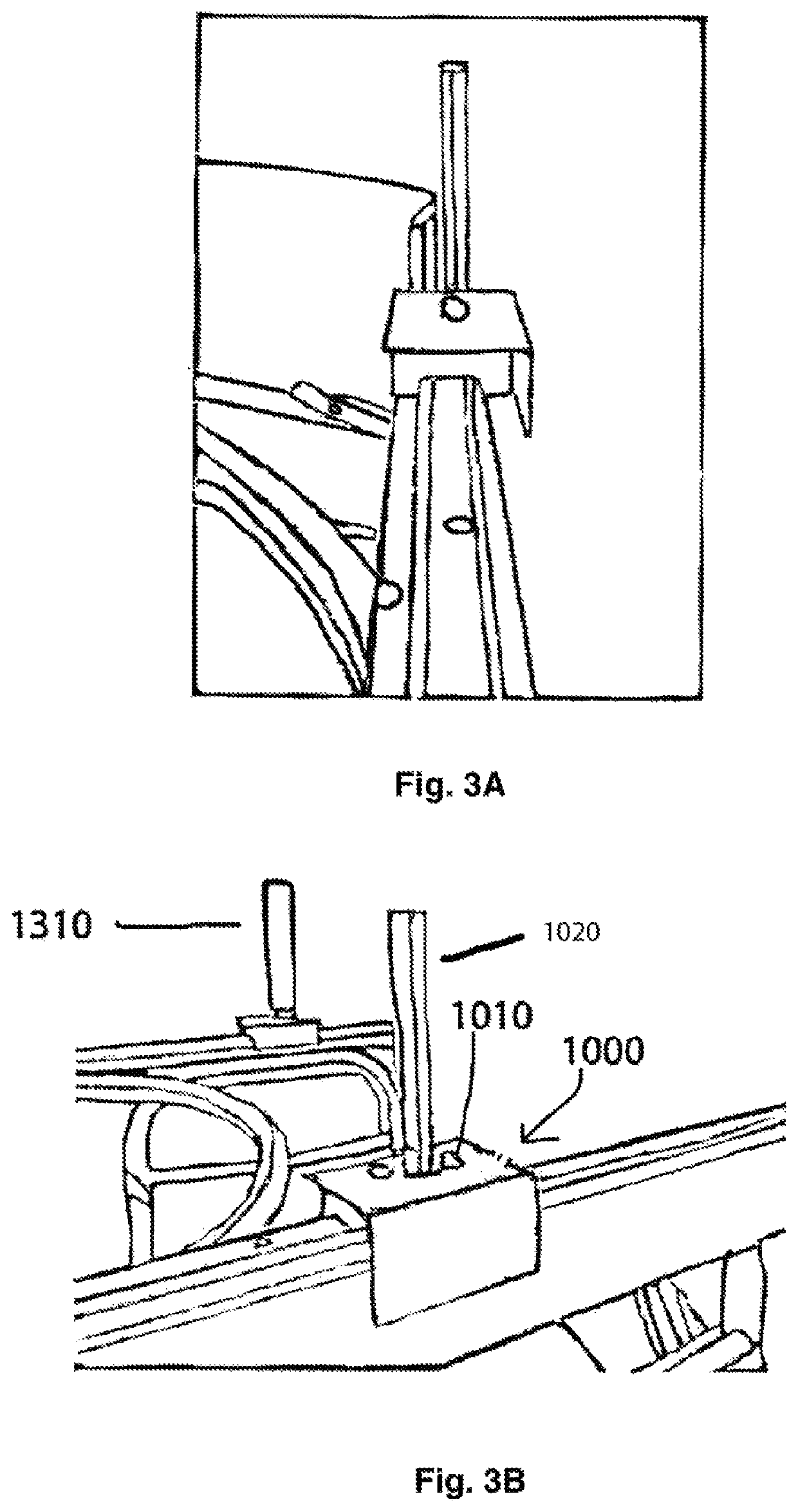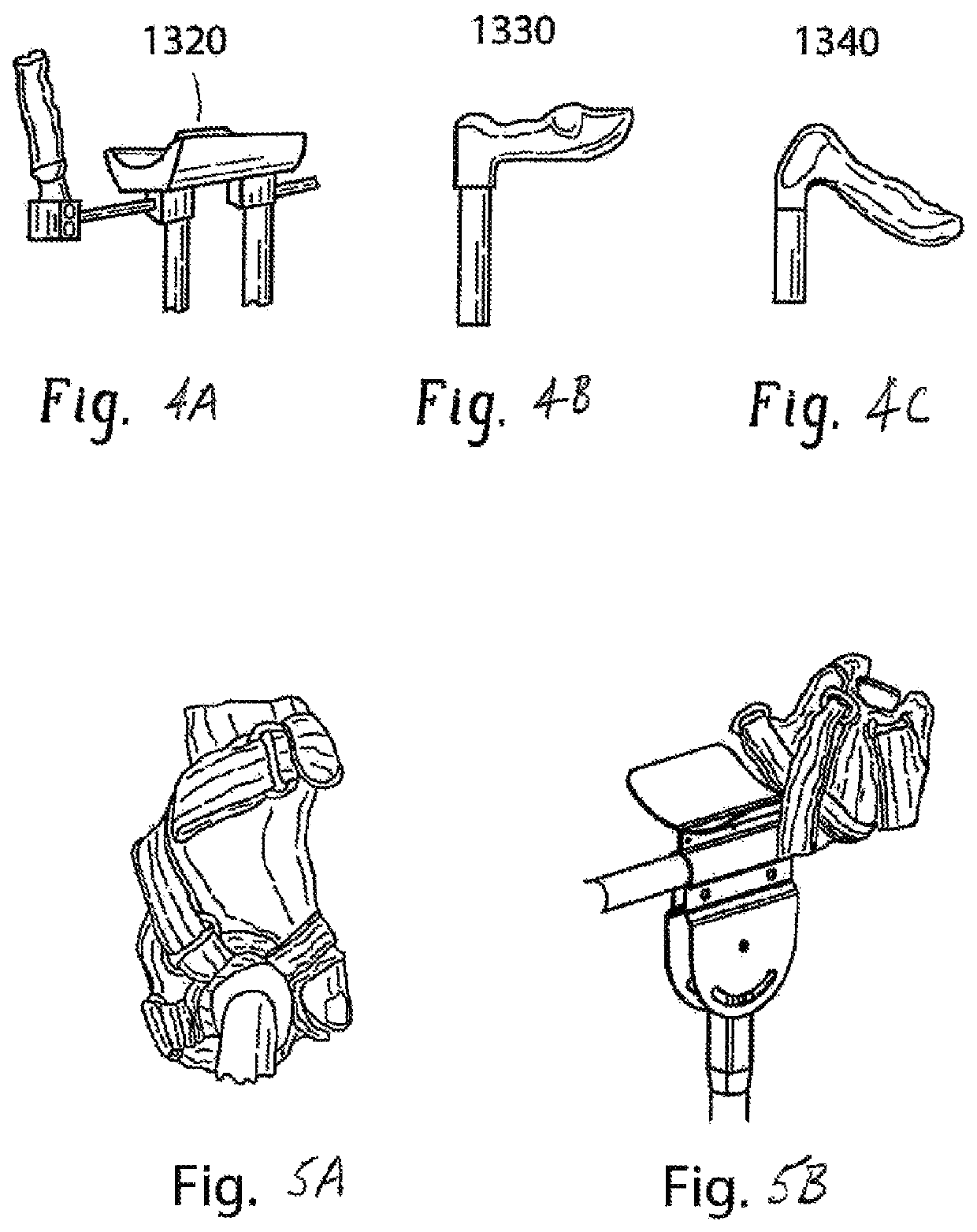Reciprocating arm motion walker
a walking arm and recoil technology, applied in walking aids, gymnastics, physical therapy, etc., can solve problems such as reducing ue management, and achieve the effects of reducing instability and associated fall risk, preventing foot contact with wheels, and facilitating turning
- Summary
- Abstract
- Description
- Claims
- Application Information
AI Technical Summary
Benefits of technology
Problems solved by technology
Method used
Image
Examples
first embodiment
[0076]A standard aluminum walker frame has been incorporated in the first embodiment and is shown in FIG. 1 (side view) and FIG. 2 (posterior view). The walker includes two side frames 100 (110 front, 120 rear) connected anteriorly with bars 200, creating a 3-sided walker. Each side frame 110, 120 has two legs, one anteriorly 110 and the other posteriorly 120 disposed or positioned. The height of the walker can be adjusted (for example, a conventional snap pin is located at the distal end of the walker leg and the snap pin inserts into one of several spaced holes in the fitting which attaches to the walker leg). Interchangeable fittings 300 typically have at their terminus standard wheels, swivel / caster wheels, glides, or rubber tips. Standard wheels 330 are shown on the front legs of the device in the illustration, and caster wheels 320 are shown in the back. This is the preferred embodiment.
[0077]Along the upper surface of each of the side frames, a generally L-shaped member such ...
second embodiment
[0093]FIGS. 6-10 illustrate the reciprocating arm movement wheeled walker which incorporates a standard walker frame and a preferred type of timing belt / pulley linkage to create reciprocating UE motion. In FIG. 6, a wheeled walker 2000 includes first, second, third, and fourth legs 20022004, 2006, 2008. Each of the legs 2002-2008 includes a wheel 2010 at a lower end. In the illustrated embodiment of FIG. 6, the rear wheels 2010 are caster mounted at 2012 for rotation about a vertical axis as is conventionally known in the art. Further, each of the legs 2002-2008 may be height adjustable. Again, details of the height adjustability are well known in the art, although one manner of providing adjustment is to include concentric tubes that include a snap pin received through one of a series of axially spaced openings. The snap pin is mounted to one of the tubes and includes a head or button portion that protrudes through one of the axially spaced openings to define the position (and thus...
third embodiment
[0108]FIGS. 11A and 11B illustrate the disclosure. An alternate method of achieving mobile assemblies, of connecting a push pull cable linkage, and attaching the support surface assemblies is incorporated. The ends 3316 of torso bar 3310 are positioned vertically and are secured in clamp 3314 which attaches to the rear portion of each side of the frame. Forearm support assemblies 3318 are capable of being adjusted vertically and fore / aft (see adjustment openings in vertically aligned plates 3332) to allow the support platform to be raised and lowered, and to be mounted forwardly and rearwardly as desired. The base of each plate is secured in an aluminum U channel 3320. One or two grip handles can variably be secured to the U channel instead of the forearm assembly. On each side frame, an L-shaped length of steel 3324 is placed upon the top rail. The frame of the drawer slider 3322 is securely mounted on the steel surface. The U channel is securely mounted to the sliding component of...
PUM
 Login to View More
Login to View More Abstract
Description
Claims
Application Information
 Login to View More
Login to View More - R&D
- Intellectual Property
- Life Sciences
- Materials
- Tech Scout
- Unparalleled Data Quality
- Higher Quality Content
- 60% Fewer Hallucinations
Browse by: Latest US Patents, China's latest patents, Technical Efficacy Thesaurus, Application Domain, Technology Topic, Popular Technical Reports.
© 2025 PatSnap. All rights reserved.Legal|Privacy policy|Modern Slavery Act Transparency Statement|Sitemap|About US| Contact US: help@patsnap.com



